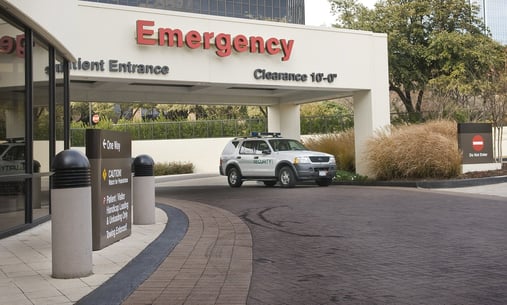 As we head into the New Year, we’re starting to see some very positive trends in healthcare.
As we head into the New Year, we’re starting to see some very positive trends in healthcare.
Staffing within the healthcare space has roared back, outpacing basically every other industry. Drug prices continue to weigh on the average consumer, but new rules and negotiation policy have sought to bring some of those down. Life expectancy in the United States has actually experienced an uptick, and the advent of new technologies in even the most cost-effective imaging systems has led hospitals to upgrade and provide a better experience for their patients.
We recently sat down with some of the leaders of the Cassling team to gauge where they think healthcare is headed in 2024. And while challenges certainly persist, they point out many trends that give providers everywhere a right to be excited.
Here’s where they see the state of healthcare today and where it will go tomorrow.
Elizabeth Grieger, Vice President of Growth & Innovation
I had the pleasure of attending RSNA 2023, and one of the things that continues to impress me is the way start-ups continue to innovate in the healthcare space.
I think there’s this misconception that so much of the improvements being made are only going to affect higher-end consumers of healthcare. But if you really look closely at some of the new technology coming out and the people who are innovating in the space, you’re beginning to see more affordable solutions emphasizing accessibility that providers of all shapes and sizes can take advantage of.
Part of it is the democratization of artificial intelligence. I think 2023 was the year that AI moved from being a buzzword to being something we’re seeing have a real clinical impact. As someone who began their career as a nurse, it’s been exciting to see some of the brightest minds in healthcare come up with solutions to problems we thought were intractable. It’s always great to see that the people who are in healthcare are still in it for the right reasons; they want to take care of people and patients and they want to find the right ways to care for people. And part of that is embracing new technology.
You look at something like EchoIQ and their AI-based EchoSolv solution, and it’s not hyperbole to say that this could completely change how cardiologists evaluate heart disease. They use the largest global database of echocardiograms, a multi-dimensional heart profile and clinical guidelines to identify 100% of patients at high risk of having in-guideline aortic stenosis, and it takes less than 3 seconds for that to occur. You obviously need a cardiologist available to validate that information and ultimately make their diagnosis and treatment plan, but that kind of high-speed detection is unprecedented and could change the game for heart disease in the United States.
I think you’re going to see more solutions like these in 2024, some backed by AI and others created by once-expensive technology becoming easier than ever to implement within comparatively inexpensive systems. High-V MRI is a good example of this, providing cost-savings to healthcare providers by dramatically decreasing both the footprint of the MRI and the amount of helium (nearly zero) it takes to operate.
Kyle Salem, President and CEO
I want to echo something Elizabeth said in regard to AI, but perhaps proceed with a little bit more caution.
Healthcare struggles with change in general, but we might be reaching a turning point with some of the AI-based tools and solutions that are out there. I think there's going to be some leaders who are going to be way out in front and very progressive in terms of finding uses and applying them and probably getting the best they can out of them. While others will be a little more cautious and play the contrarian role. But overall in 2024, you’re going to see a lot of healthcare providers get creative with AI.
I want to talk about one thing that I’m very optimistic about, probably more so than a lot of others. I don’t think we’re going to see these widespread hospital closures that so many keep predicting.
I’m bullish on hospitals’ continued sustainability because I’ve seen up close how dedicated and smart hospital teams are. Even with the risks we face today, healthcare administrators and providers continue to find ways to pull through, and that speaks to a lot of the ingenuity that Elizabeth mentions.
Some hospitals will close, and I by no means want to minimize the impact this will have on their communities and the patients they serve. But by and large, I fully expect hospitals to continue finding ways to do more with less. And given recent hiring trends, I actually think a lot of facilities, particularly in rural areas, will rebound in 2024, accelerating their hiring, reducing burnout and helping their providers better serve their communities.
Brian Bradfield, Chief Operating Officer
I agree with what Kyle’s saying, and I want to add to that by saying I think a lot will come down to specialization.
Most hospitals have traditionally tried to be all things to all people, because that’s just how they were set up. “Let’s take all of the services you go to a specialist for, and let’s bring them all under one roof.” That’s how hospitals became such trusted pillars of the community.
As budgets continue to be an issue, hospitals will have to take a serious look at the types of services they offer and make some really tough decisions about what’s sustainable in the long run. And look, it’s never fun to have to cut programs that could help even a small number of patients. But if the difference is cutting a program that serves maybe a few dozen people per year or being able to stay open, I think a lot of hospitals will make the decision that allows them to continue serving.
I’ll give you an example of what I mean. At the facility I was at before I came to Cassling, we had a community need for vascular surgery, but not on a full-time basis. Rather than support a fulltime service, the facility partnered to prevent loss of hospital money while still serving the community. So that was a situation where we knew we could maybe pull back a little and our community would still have care options.
That said, I understand how hard these decisions are to make. Look at what happened with the Rural Emergency Hospital designation. This gives rural critical access hospitals with fewer than 50 beds the opportunity to move completely away from inpatient care, toward a much leaner emergency model.
But as of October, only 15 hospitals had made that transition. Now, for many hospitals, it truly isn’t the right fit. But I’d wager there are also a number of hospitals for whom that level of painful change is hard, even if it could be necessary for long-term sustainability.
Still, whether it’s a complete transition away from emergency care or a more gradual reduction in the number of services offered, I suspect a lot of facilities, particularly rural ones, will discover areas where they can specialize or partner to best serve their communities. To Kyle’s point, I think this is far more likely to occur in 2024 than to see the sorts of large-scale closures that always seem to be looming but don’t necessarily happen.
We’ll continue to bring you the latest insights and look at current trends within healthcare throughout the year. But until then: Where do you see healthcare transforming in 2024?






Comments